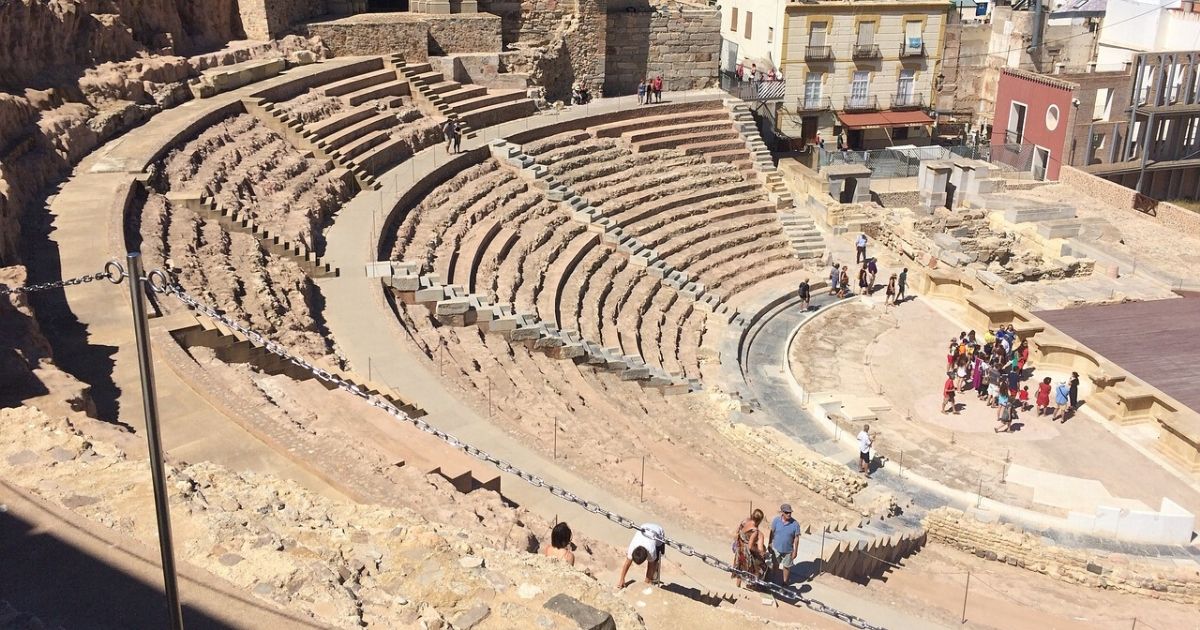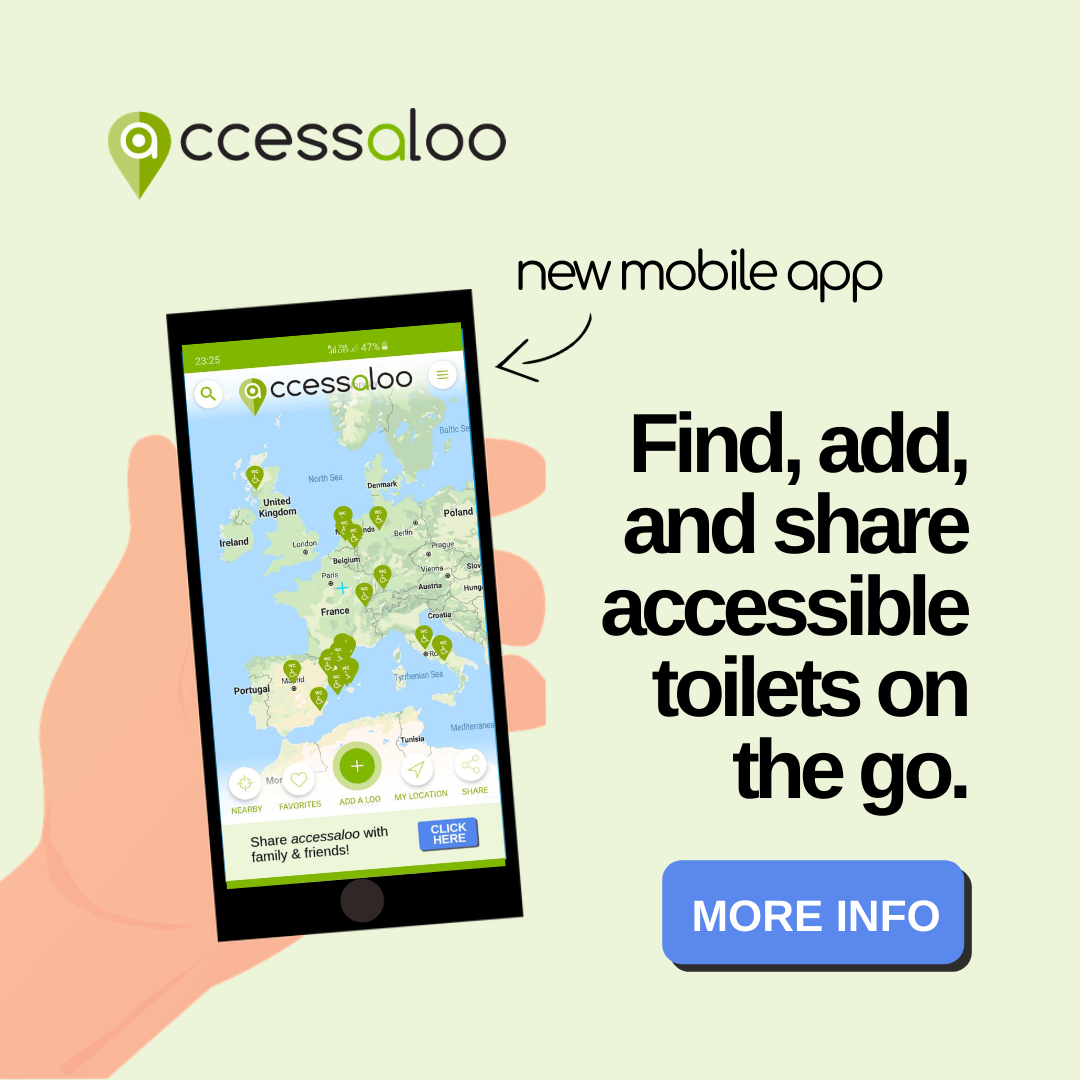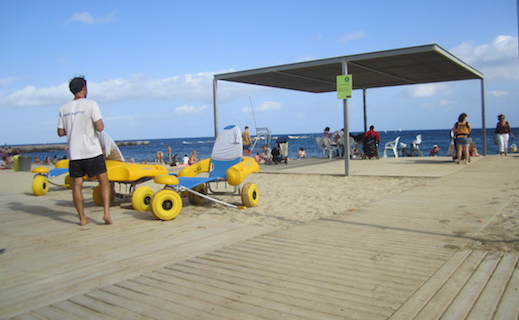In this guide, we explain everything you need to know about the accessible Roman theater in Cartagena. You read about what it is, how to get there, tickets, its accessibility, and much more. When planning your next trip, be sure to include a visit to this wonderful complex.
About the amphitheater
The accessible Roman Theater in Cartagena is an impressive reconstruction of what the ancient Roman Theater must have looked like during its prime time. The original structure still had columns and a colonnade that protected spectators and actors from sun and wind. There would also have been gardens around the Theater in the past.
For years, the Roman Theater was hidden a few meters deep underground. It was not until 1987 when a 19th-century palace was demolished that Corinthian columns were discovered and archaeologists set to work. During the Roman period, the Theater was located on one of the hills surrounding the city. The structure is believed to date from the late 1st century BC. The Theater would have seated about 7000 viewers back then. During the excavations, the archaeologists uncovered the remains of several civilizations. They discovered traces of the Visigoths, Byzantines, Moors, and the eventual reconquest by the Christians in the 13th century.
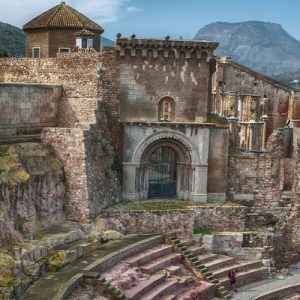
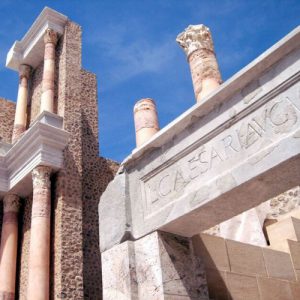
The structure
Each roman Theater exists of the same few main parts: the cavea, the orchestra, and the scaena. The accessible Roman Theater in Cartagena is the same. Each of these parts has its function. Below we explain what these purposes are precisely. The theaters we know today are based on the way the Romans built their theaters back in the day.
Cavea
The cavea, that seated 7000 people, is also called the tribune. It is divided into three sectors, also referred to as moeniana, separated by five stairs in the top rank and seven stairs in the middle and bottom level. The main entrances were on the side of the Theater. The semicircular space in front of the stage was the orchestra pit.
Orchestra
From the two side entrances, you also access the orchestra. The orchestra is half a circle in between the tribune and the stage. It got its name because of its function. This area is where the orchestra was seated. It was a functional place because it is both close to the tribune and the stage. Other times, this was the place where visitors sat in comfortable chairs.
Scaena
The stage, or scaena, is the place where the performances took place. An essential aspect of a Roman Theater is that the stage is raised. Greek theaters usually do not have this.
The Museum
In the Museum of the Roman Theater, you learn more about the rich history of the Roman Theater through audiovisual material. You discover that there was once a public market hall and a harbor that existed until the 13th century. Go from the Museum to the reconstructed Theater via an underground corridor. The Museum exists off various parts.
Theater architecture
The first hall of the Museum teaches you about the architecture of the Theater. It contains mock-ups and original pieces that help you understand the architecture of the building. The materials used, its quality, and other architectural aspects of the complex make sure this building is a perfect example of the Augustan era.
Theater and Society
The second hall teaches the visitors all the functions of the Theater in antiquity. It shows you all the recreational, political, and religious purposes it had over time. The emperor Augustus also used it for personal benefits.
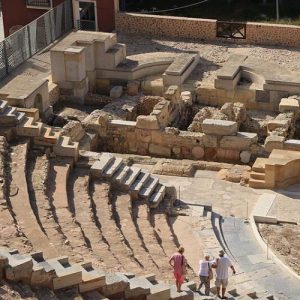

Accessibility of the Amphitheater
Cartagena has a cultural organization that is working to make the city and its touristic sights more accessible, to as many people as possible. So far, they made multiple changes to the Roman Theater and its Museum to make it more accessible for wheelchair users.
The several changes they made are clearly visible on the premises. Things like adapted toilets and there is an accessibility service, where you can rent wheelchairs for your visit. In case you want to be sure of your wheelchair, you can also rent one through us. Look here for more information.
Lastly, all the barriers that made visits with a wheelchair impossible have been eliminated. Escalators and a lift allow visitors to explore the whole Museum.
During your visit, you first see the three-floor museum. To get to the upper floor, they have installed a wide elevator. After that, you go through the tunnel to get to the real remains. Here you have a viewpoint for wheelchair users in the middle.
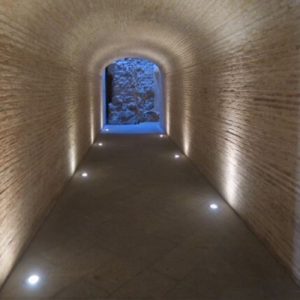
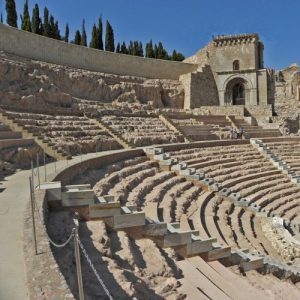
Wheelchair accessible tours in Cartagena and Murcia
Would you like to visit this Roman Theater and other sights in Cartagena and Murcia? Look at our accessible tours by clicking on the button and book an unforgettable day. We offer various tours that let you discover these beautiful places. Would you like to visit another sight? Feel free to contact us, and we help you figure out your perfect vacation.
How to get there
The Roman Theater is located near the coast of the city Cartagena. It is quite central, so you reach the Roman theatre and its Museum either walking/rolling or car.
Other than that, you can also reserve adapted transport through us. This way, we can assure you that a wheelchair adapted vehicle picks you up and drops you off at your preferred location. To look at our transfers, click here.
The address of this complex is Town Hall Square nº9, 30201 Cartagena, Spain
Ticket information
When you visit the Roman Theater, you buy a ticket that also includes a visit to the Roman Theater Museum. On tour through the complex, you first go through the Museum, and you end at the Roman Theater. Upon presentation of valid disability documents, people with disabilities receive a discount.
Get inspired, continue reading
- Wheelchair Accessible Cultural Highlights of Spain
- Explore Disabled Accessible Travel’s destinations
- Accessibility guide of Acropolis and Museum
- Disabled Accessible Travel Expands Accessibility Services with Launch of Mobile App ‘accessaloo’
- Wheelchair Accessible Transfers
- Accessibility of St. Petersburg
- Mobility Equipment Rentals
- 7 Wheelchair-friendly Restaurants in Barcelona
- Everything You Need To Know About Tipping In Europe
- Nova Icaria And 4 Other Accessible Beaches Barcelona Has To Offer
- Accessibility guide Alhambra
- Accessible Train Tickets in Spain – Renfe
- Accessible islands in Europe
- Top 8 Accessible Destinations in Europe
- Accessibility guide Parliament Budapest
- A useful guide to European toilet keys
